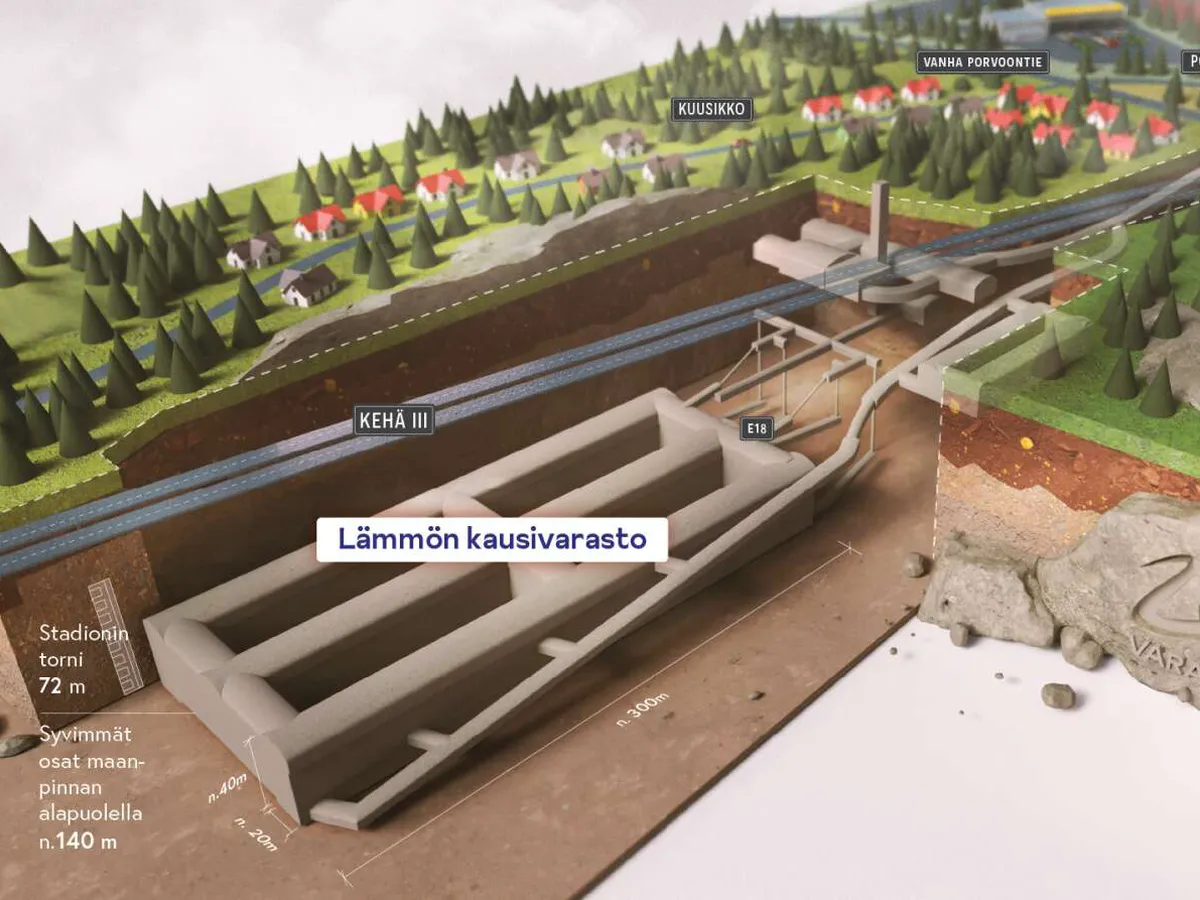Cheap electricity and cheap heat storage is a good combination. At its best, it creates demand for moments of cheap electricity and raises the price of electricity, which makes wind power investments more profitable.
Last week, Vantaa Energia announced that he will start building the world’s largest seasonal heat storage facility in Vantaa already this coming summer.
The announcement was overshadowed when the week was colored by the disappointment that Sweden had pulled the plug on SSAB’s factory investment. Still, it is another important investment promoting the green transition.
Vantaan Energia plans to build a huge water tank in the bedrock of Kuusikkomäki in Vantaa. Two electric boilers will also be built next to the warehouse. The investment is EUR 200 million. The cave, which will be completed in 2028, can store 90 gigawatt hours of thermal energy, which can heat a medium-sized Finnish city for up to a year.
Vantaa Energia’s investment is not a unique project. A few years ago, Helen built a heat storage facility in the old oil caves of Mustikkamaa, which was the largest in Finland at the time. These are examples of how heat production is becoming electrified and heat storage is becoming more common.
A growing problem in the Finnish energy system is the variability of electricity production. Increasing wind capacity makes electricity really cheap in some places, but its storage is short-lived and expensive.
However, the development of technology has enabled a transition where cheap electricity can be used to heat water with industrial-scale electric boilers and store it. In the past, heat has been produced, for example, by burning coal, gas or biomass.
Heat storage is much cheaper and longer-lasting compared to electricity storage.
In recent years, the increase in electricity price fluctuations and affordable hours, the increase in the price of biomass, the reduction of the electricity tax for heat pumps and electric boilers, and the development of heat pump technology have improved the profitability of heat storage.
Cheap electricity and cheap heat storage is a good combination. At its best, it creates demand for moments of cheap electricity and raises the price of electricity, which makes wind power investments more profitable. As a result, fuel burning and carbon dioxide emissions are reduced.
The electrification and storage of heat production is a big issue for the Finnish energy system.
According to EK’s statistics, there are pending investments of over seven billion euros for replacing fossil fuels, heating, heat pumps and energy storage.
The phase-out of fossil fuels in the heating sector is progressing rapidly. Even burning biomass may become more difficult in the future, even though it is currently considered zero-emission in the EU. At the beginning of the year, the EU’s climate panel warned about shrinking carbon sinks and suggested limiting the use of wood-based bioenergy in Europe.
Finland still has a lot to do to achieve its climate goals. The goal is carbon neutrality by 2035. All kinds of solutions are needed.
“Electrification and storage of heat production is a big issue for the Finnish energy system.”
